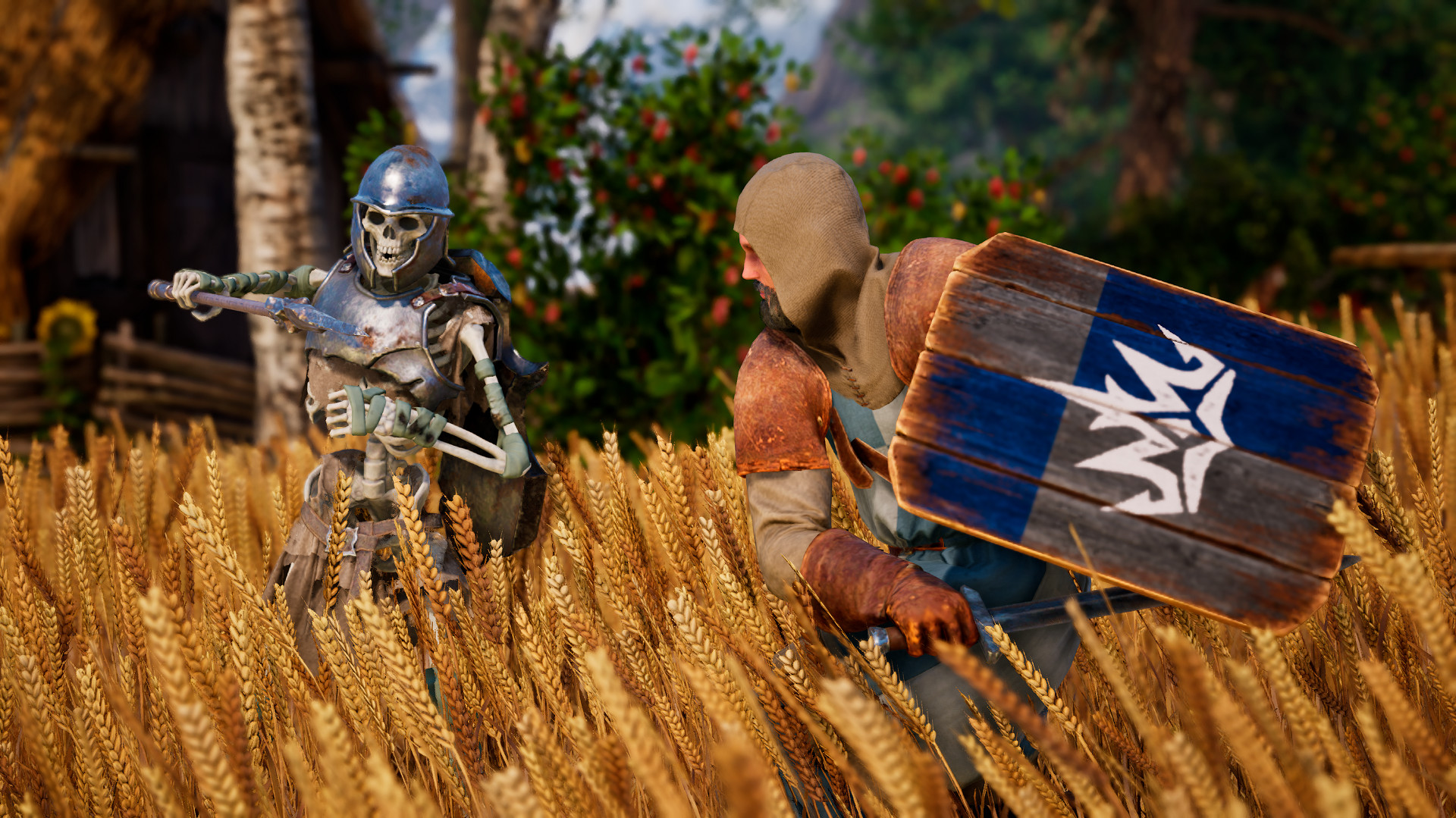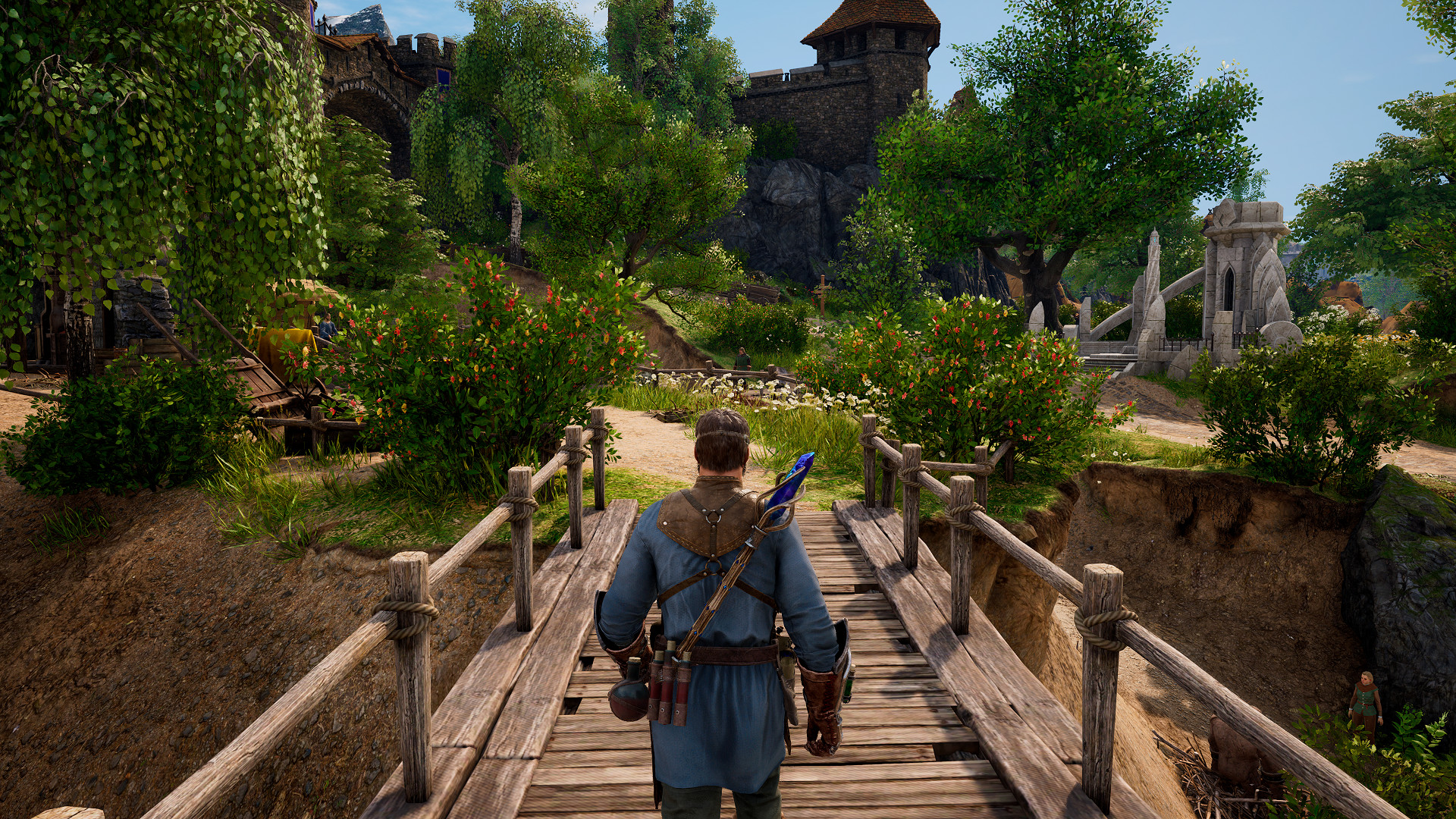King’s Bounty II is an upcoming turn-based strategy and the latest installment to the wildly popular franchise developed by 1C Entertainment. The game will be arriving in all its glory on August 24, 2021, on PC, PS4, Xbox One, and Nintendo Switch to invite players to fight darkness looming over Nostria.
The developers promise immersive character-driven non-linear adventure with the decisions that will test your mettle, epic turn-based battles that will task you with outsmarting your opponent and making use of 3D landscape elements and journeying across the ravaged lands of Nostria in third-person view to get a closer look at the beauty and destruction of the region.
I had a chance to spend a few hours in the game to see what it has to offer and share my first impressions. Note: the article was written after playing a preview build of King’s Bounty II shared by the developers. The state of the game between the preview version and the final version will likely drastically change, especially considering the release of the Day One patch.
I have not had a chance to play the previous King’s Bounty installment, The Legend, so I will mostly be comparing the game to other turn-based strategy franchises such as Heroes of Might and Magic or Disciples.
The events of the game take place in the fantasy world of Nostria. You get a choice of one of the three characters, each with their own class, abilities and talents. The protagonists are fully voiced and act according to their social status and background.
The overall beginning of the game is the same regardless of your choice. However, as the plot progresses, you get to make decisions that might have interesting consequences.
The game features a system of ideals where you choose between Order/Anarchy and Art/Strength. After a certain point, your character will commit to one of those ideals. In the few hours in the game, I have seen a handful of choices offered in terms of ideals and they made me remember the Blood & Tears system in Might & Magic: Heroes 6 by Ubisoft.
There is no outright good or bad choice to make, as it mostly relies on your perspective. Do you consider your time to be too important to search for a mage whose arcane servants block your path? If so, destroy them and proceed. Or would you rather try a peaceful approach to escape combat?
The way certain things proceed afterward might change, including the possible reward, be it treasure or experience.

The new addition to the franchise arriving with King’s Bounty II is the game’s change in perspective. Whereas the previous titles of the series utilized the classic isometric view for traversing the map outside of combat, KB2 moves in a different direction.
This time, you get to see the lands of Nostria up close and personal as the game’s perspective is closer to that of third-person RPGs such as The Witcher 3 or Dragon Age: Inquisition.
You can control your character and directly interact with NPCs, loot chests, visit shrines and fast-travel points, mount and dismount your horse, and much more. Between this closer look and the amount of nicely done cutscenes, the world comes alive with new colors.
The animations and character models themselves are a bit stiff compared to the games mentioned above, but the beauty of the world astounds anyway. Depending on the gear you have equipped, the character’s model changes accordingly.

When it comes to turn-based army combat, it feels like coming home. The closest game in terms of grid combat would be Might & Magic: Heroes 6.
You have your character and your own abilities, such as harmful or supportive spells that can be used once per round provided you have enough mana. A decisive magical strike at the right moment can change the tide of battle.
Of course, it won’t really be King’s Bounty if you didn’t have access to a personal army. You can have up to five unit types active at any moment, not counting those in reserve. The overall number of troops you can employ increases as your character levels up.
Troops have a variety of stats that decide the number of health points, attack damage, the order it would take in combat, etc. Some units have special abilities such as an ability to place a bleed effect on enemies or a healing spell that can be used on allies. Additionally, there are passive effects such as the attack of opportunity for some melee fighters that will attempt to finish off disengaging enemy.
If the battle calls for it, you can order your troops to wait (for example, if there is no direct shot for your archers, hoping to drive the enemy out from their defensible position before the round ends) or to defend their position.
Unlike Heroes of Might and Magic or Disciples 2, where units were only given one action per turn, in KB2 it is decided by action points. You can, for example, cast a healing spell and still have enough AP to move your healers out of harm’s way.

The biggest change when it comes to KB2’s turn-based combat mode is the addition of 3D battlefields. Previously, the battles were always waged on flat surfaces.
Now, you will frequently see AI attempting to hide from your archers or flank your squishy ranged units by using the terrain to its advantage. Unlike, say, Heroes 3 where archers could still shoot through obstacles with a hefty penalty to damage, in KB2 your ranged units will not be able to land a hit on a hiding enemy at all.
Players will also encounter diverse terrain types, fitting the location that your hero is traversing with their army

To sum it up, 1C Entertainment is clearly attempting to bring the franchise to a new exciting direction by combining third-person open-world RPG elements with the expected turn-based tactical goodness.
In the preview build, there are areas where this combination works wonders and there are also some places where it is a bit rough around the edges.
Exploring the beautiful world of Nostria atop your loyal steed (lovingly nicknamed Nag during my own adventure) is an exciting prospect. Looting chests, visiting shrines to increase your stats, helping local villages with their marauder or undead problems to get some sweet loot and experience – it feels like playing an actual RPG.
Add some non-linear story with a number of choices of various levels of severity? Yes, please!
However, the camera that can’t be wrangled even with the in-game settings and the lack of certain features like jumping or sprinting and having to mount/dismount every few moments to interact with stuff can sour the impression by interrupting that adventure with a bit less than perfect gameplay elements.
As one would expect, the turn-based combat mode is very good. After a few hours inside the game, I have not noticed anything that sets it drastically apart from the classic way to approach it, though. Whether it is a good thing or a bad one is for you to decide.
Lastly, the game is quite visually stunning, especially when it comes to surroundings. However, long-time fans of the series might notice that its look is now closer to that of Dragon Age: Inquisition, embracing the darker realism and leaving behind the exaggerated, over-the-top style of the previous installments.
Note: the article was written after playing a preview build of King’s Bounty II shared by the developers. The state of the game is subject to change between now and the release date.
Similar to: King’s Bounty: The Legend, Might & Magic: Heroes 6
Pros:
- Beautiful realistic aesthetics
- Vast open world with a lot of places to explore
- Character-driven deep narrative
- Turn-based combat goodness
Cons:
- Camera
- Lack of certain open-world elements (sprint, jumping)
- The switch between open-world & isometric combat window is a bit abrupt







